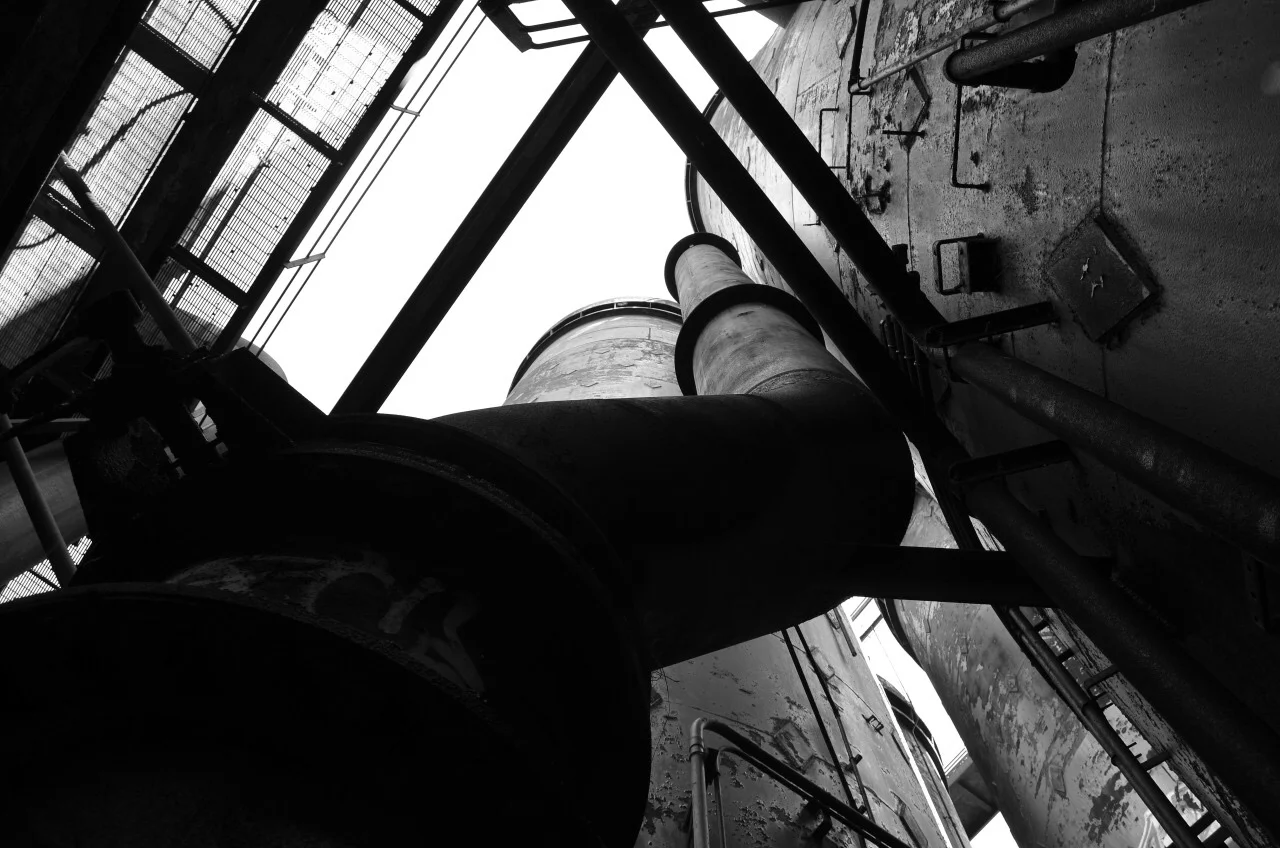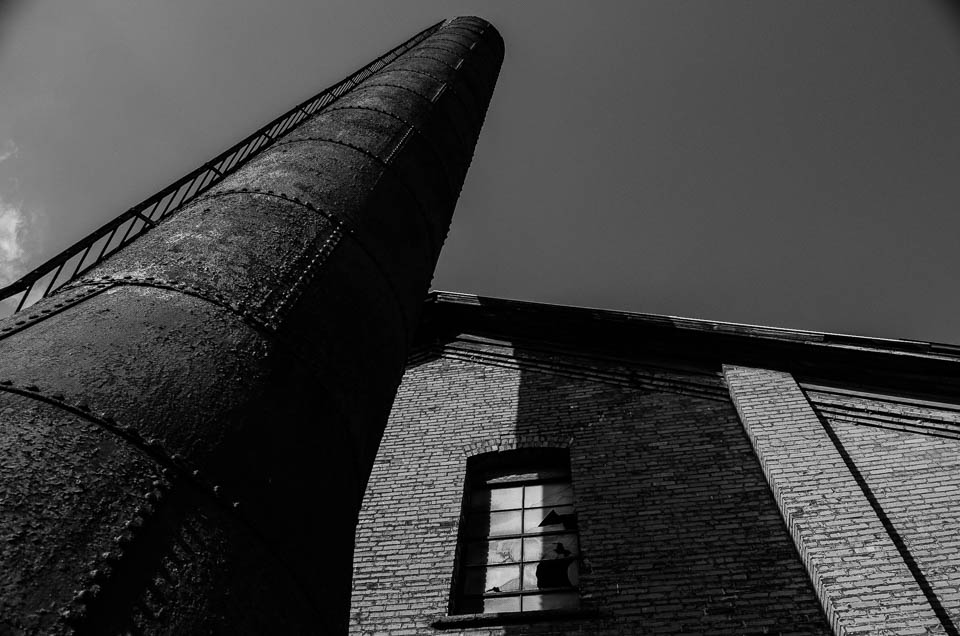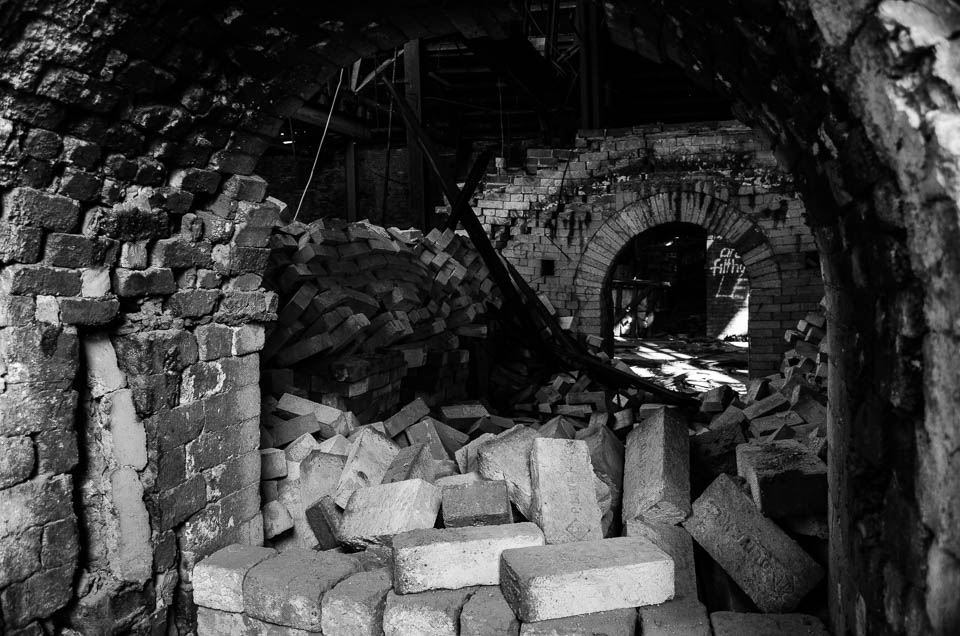New Castle, PA - Having lived in New Castle for a time, I drove past this place often on my way back to Youngstown. You can't see much from 224, but behind the trees sits a 100+ year old factory that looks like it was carpet bombed. This place has a fascinating history, and played a huge part in the employment and lives of the people of New Castle. I could post photos of the sections that look like they were shelled, but I'll leave you with some documentation of the things left behind, some company history, and an emotional statement from one of the employees a few months prior to the factory closing for good. See below.. BUT FIRST, this photo of a china coffee cup. Nothing too exciting right? I noticed it was marked "Mayer China, Beaver Falls PA" so I ask myself what is pottery from Beaver Falls doing in New Castle? It dawned on me when I first got a real camera, I took a trip to a china factory in Beaver Falls, which was demolished shortly thereafter. Turns out I was at Mayer China's original factory. The company was bought out by Shenango, and in the 90's they closed Mayer and transferred the production to New Castle. I will post the images from the trip to Beaver Falls in the future.
The New Castle News of May 8, 1991, printed a passionate editorial from Shenango China employee Patti Ryan that read in part, “As the first wave of permanent layoffs took place April 12, myself included, I’d like to share a few thoughts with my fellow Shenango China employees and people of this community. For all of the “Rah-Rah Shenango China” people who had tremendous pride in their work, it was more than just a job. It was a group of people who grew closer through good and bad times. For those who never felt that sense of pride, it is difficult to put into words. Those of us who have, need no further explanation. Upon visiting Washington, D.C., this past summer, I proudly showed my 8-year-old daughter the Castleton China display in the White House. It was obvious to me that she also understood the pride. It wasn’t necessary to have worked there to felt it. This community will feel the economic impact of this plant closing, along with a sense of loss… Now, the Shenango logo which, to me, always symbolized the pride, is being taken to New York. To put it bluntly, after the corporate rape, our Shenango Indian is being dragged to Syracuse. As consumers, I hope the area people will remember this when making purchases, because the Pfaltzgraff Corp. and its stooges at Syracuse China have done the good and loyal people of this community and Shenango China a great injustice.”
http://www.lawrencecountymemoirs.com/lcmpages/896/shenango-china-company-new-castle-pa
"During the late 30’s, Mr. Smith became convinced that America would soon be in the war. He began building three bisque 70′ tunnel kilns and one 105′ kiln. Delayed steel shipment caused the kilns to be raised under circus tents. Wartime created many difficulties. Young skilled workers went off to war. Many employees went to work in defense industries, which paid higher wages.
Although government contracts made up over 50 percent of all production, critical materials forced substitutes. Due to this hardship, more creative methods of decorating, mixing color and packing were devised. In addition, during the war CIO-USWA won the right to represent the workers. With the end of the World War II, it became apparent that a balanced expansion would have to be achieved. The government ware made during the ware was one fire, plain white ware or with little decoration. In the post-war economy there would by a large demand for dinnerware and overglaze hotelware. A building plan was initiated in 1945 and completed in 1947. The addition contained 150,000 square feet for decoration and a 60,000 square foot building with a 200′ tunnel kiln was built for a new refractories division.
During the war, they also made the ceramic parts for land mines. A group of local businessmen including officers of Shenango formed a company for this express purpose. Later this led to a minority stockholder suit, which occupied the officers and directors for a ten-year period."
http://www.lawrencechs.com/museum/collections/shenango-china-collection/























